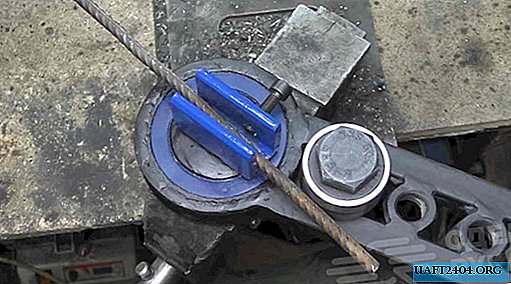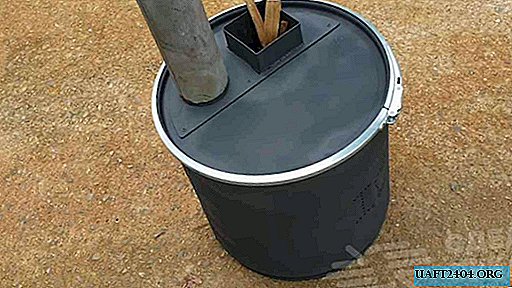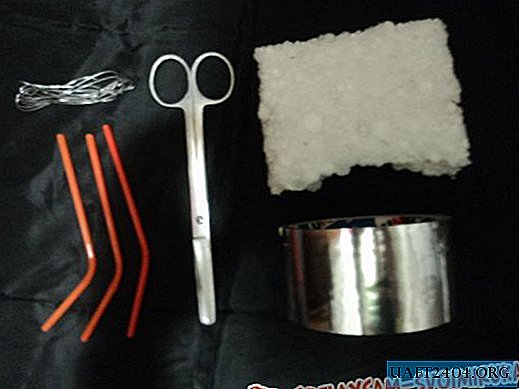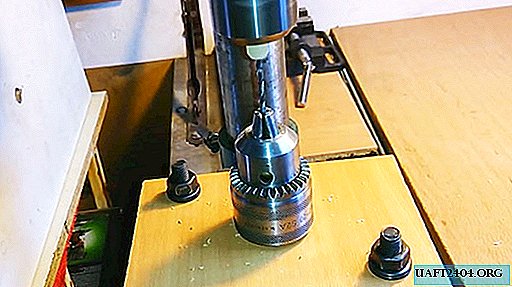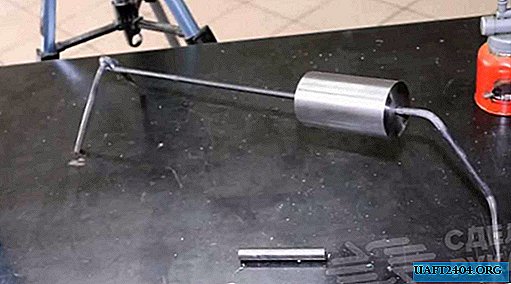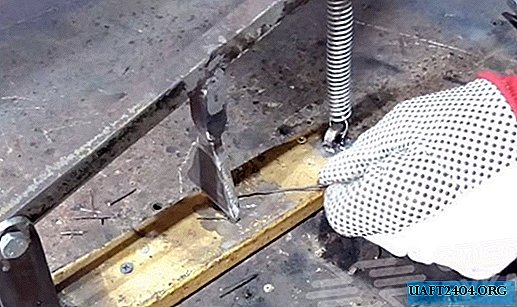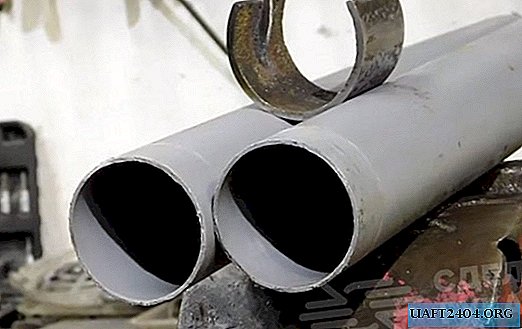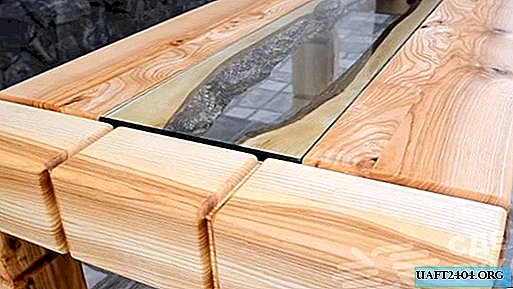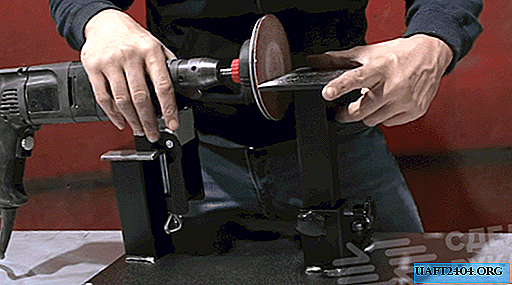Share
Pin
Tweet
Send
Share
Send
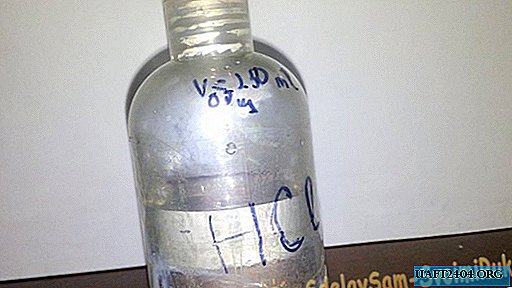
Alchemists who first received hydrochloric acid in the 15th century called it "spiritus salis", "spirit from salt." This acid had magical properties at that time: it corroded paper, dissolved metals, poisoned people. These properties have remained with her to this day, but now this acid has been sufficiently studied, and there is no magic here.
Hydrochloric acid (HCl) is a strong monobasic acid, in its pure form is a clear liquid. At its maximum concentration of 38%, it “smokes” in air. We will receive an acid with a concentration half that.
So let's get started.
Safety precautions
Caution, work with toxic substances!
All experiments must be carried out in a well-ventilated room or under a hood, Be sure to wear safety glasses (available at the store. Store) and gloves (if you don’t find special chemical gloves, they are good quality for washing dishes).

At the place of the experiment, baking soda must be present in order to neutralize acid in an unforeseen situation (carbon dioxide and water will be released).
It is strictly forbidden to conduct an experiment in metal containers.
Will need
To conduct the experiment we will need:
- Acidic electrolyte for batteries (sold in the car shop);
- Distilled water (ibid.);
- Salt (is in any kitchen);
- Baking soda (see safety precautions).

From the dishes you need:
- Glass bulb;
- A vessel with sand where you can place the flask;
- Several disposable cups of 200 ml;


If you have a heat-resistant bulb, you can heat it under the open flame of the burner. But still I recommend it through sand, in which case it absorbs acid.
You will also need a pair of plumbing corners with a diameter of 50 mm and a burner (in my case, alcohol, but I recommend using a gas one).

Stage 1 - evaporation
Battery electrolyte is the most 36% sulfuric acid (H2SO4). First, we need to increase its concentration.
Pour 200 ml into the glass, that is, almost to the edges and pour a little more than half the glass into the flask. Make a marker with a marker and add the rest.

I put a foil reflector around the flask for more efficient heating, but later removed it because it began to melt.
Now we put the flask on the burner and evaporate to the level of the previously set mark, even a little lower.

In parallel, we put gauze folded several times over the corner and fix it with an elastic band. We prepare an unsaturated solution of soda and dip in it the end of the corner with gauze.

When the electrolyte begins to boil, we put a corner on the flask, it sits tightly on it. The gauze end is sent to the open window.

This is necessary if suddenly sulfuric acid itself begins to evaporate with water. If you do not overheat the flask much, this will not happen.
Burner in action:

The power of my burner is relatively small, so evaporation took about an hour. A gas burner or electric stove would greatly accelerate this process.
After the first stage is completed, a little less than half of the solution should remain in the flask, i.e. an acid with a concentration of about 75%. Do not forget about accuracy.

Let it cool to room temperature.
Stage 2 - calculations
Now that we have concentrated sulfuric acid, we can carry out the main reaction, it looks as follows:

But first, let's do some calculations, and in the end we compare them with what happened in practice.
So, initially we had 200ml of electrolyte with a density of 1.27 g / cm³. Looking at the table of densities of sulfuric acid, we see that this density corresponds to a concentration of 36%. Calculate the volume of acid:
200ml * 36% = 72ml - V (H2SO4)
After we evaporated the solution, its concentration, and, accordingly, the density increased. We look at the same table and see that a concentration of 75% corresponds to a density of 1.67 g / cm³.
Knowing the current density (p) and volume (V) of the acid, we find out the mass:
m = p * V;
m (H2SO4) = 1.67g / cm³ * 72ml = 120g;
m (H2SO4) = 1.67g / cm³ * 72ml = 120g;
Now from school chemistry we recall:
m (H2SO4) / M (H2SO4) = m (NaCl) / M (NaCl) = m (HCl) / M (HCl),
where M is the molar mass of the substance.
where M is the molar mass of the substance.
The molar masses of H2SO4, NaCl and HCl are respectively 98, 58.5 and 36.5 g / mol. Now we can find out how much salt is needed and how much HCl will be.
Namely, we will need 72 g of NaCl, this is 34 ml, take in excess - a quarter cup.
Excellent, and HCl in theory will be 44.7 g.
There is a g / l column in the HCl density table. We take from there the value for the concentration of 15% - 166.4 g / l. The volume of water required to obtain 15% HCl is 44.7 / 166.4≈270ml. We will take 200ml. As a result, in theory, I will get 22% hydrochloric acid.
Stage 3 - obtaining acid
We connect the two corners as follows:

And the whole structure will look like this:

The corresponding acid will condense into the vessel labeled HCl, the volume of water in it is 200ml. Also mark the current fluid level on this vessel.
We remove the corners and pour the amount of salt calculated in the calculations into the flask through the funnel.

The solution turns yellow.

In order for hydrochloric acid to start to stand out, you must turn on the burner. But first, we tightly attach the corners to the flask and the receiving vessel.
With the condensation of acid in water, “vertical waves” are formed. Also, the solution heats up and needs to be cooled. For example, you can put another vessel with ice from below.

The reaction proceeds relatively quickly - 20 minutes, after which you can turn off the fire. We give the last pairs of hydrochloric acid to dissolve in water, after which we tightly close the vessel. When the flask has cooled, we dilute the remaining solution there with water (about one to one) and pour it into the sewer.
Total

By the label on the vessel, we determine how much liquid has been added. I have it ⅙, that is 17%. This is the concentration of our hydrochloric acid. Compare it with that obtained in theory.
17% / 22% * 100% = 77% is the reaction yield.
It is important to note that there is no way out equal to 1, there are always losses. In my case, this is not enough evaporated electrolyte. Ideally, the concentration of sulfuric acid should be 90-95%.
Check the resulting acid for interaction with the metal.

We observe the rapid evolution of hydrogen. This means that the acid is suitable for further experiments.
Variations
As a flask, you can use a clean glass bottle of beer or soda, but provided that the heating is as smooth as possible. Instead of PVC corners, you can take polypropylene pipes and corners of a smaller diameter (suitable for your flask).
Once again, I urge you to observe safety precautions. Good luck to everyone!
Share
Pin
Tweet
Send
Share
Send

